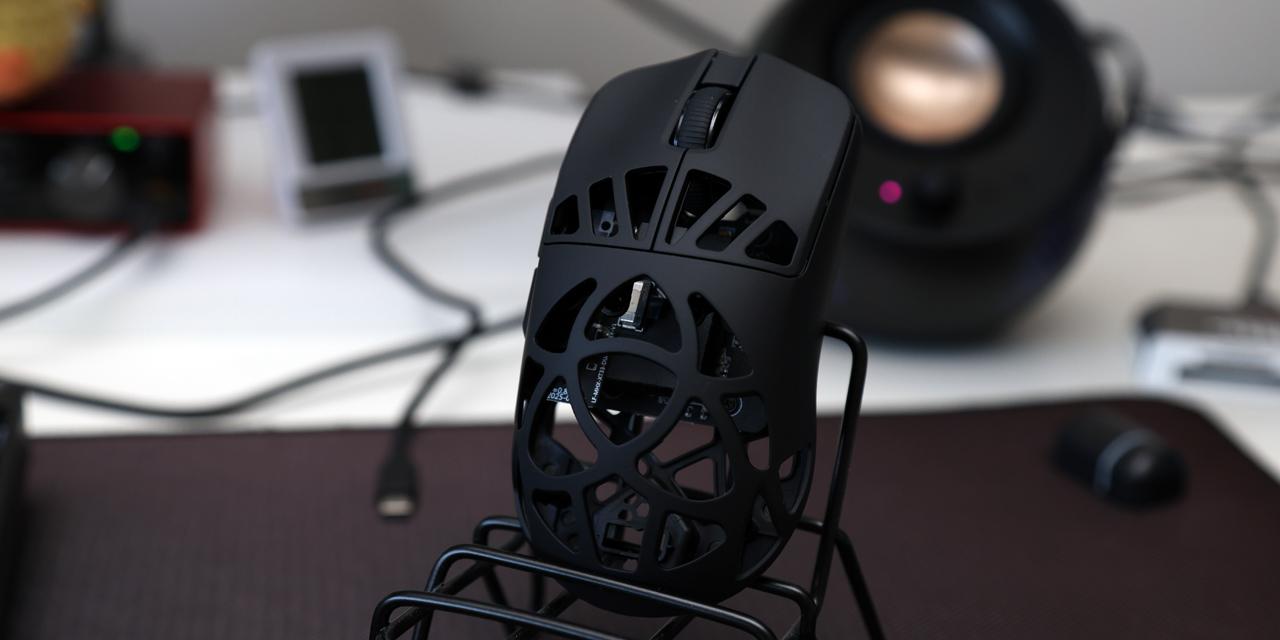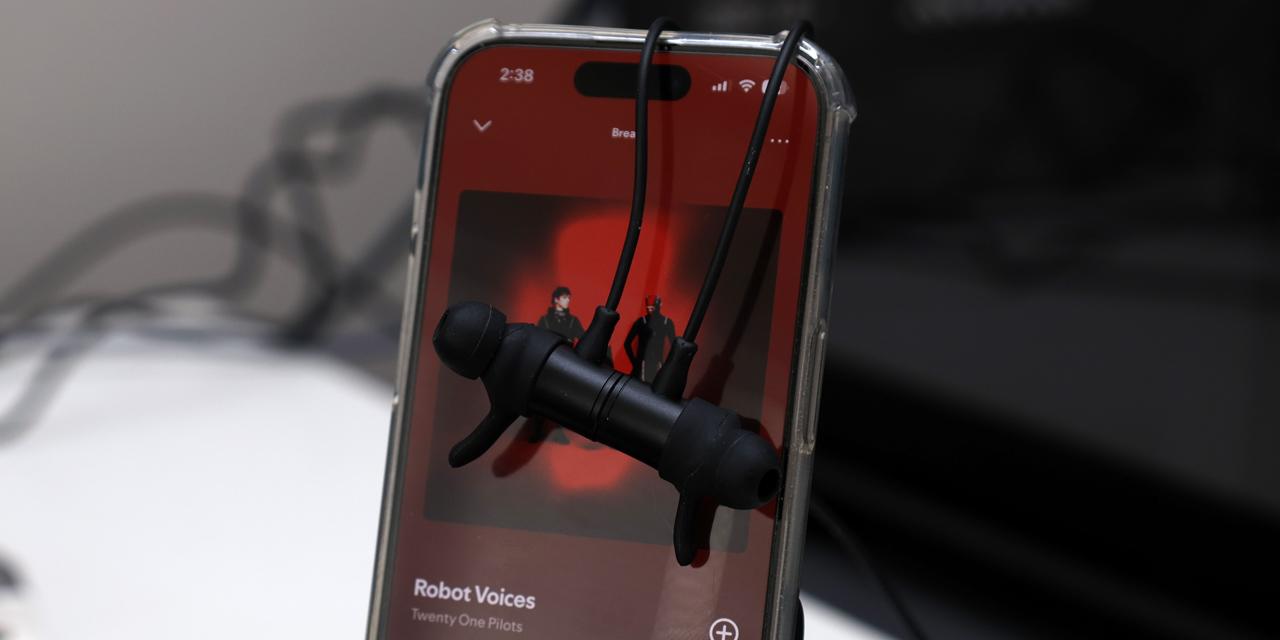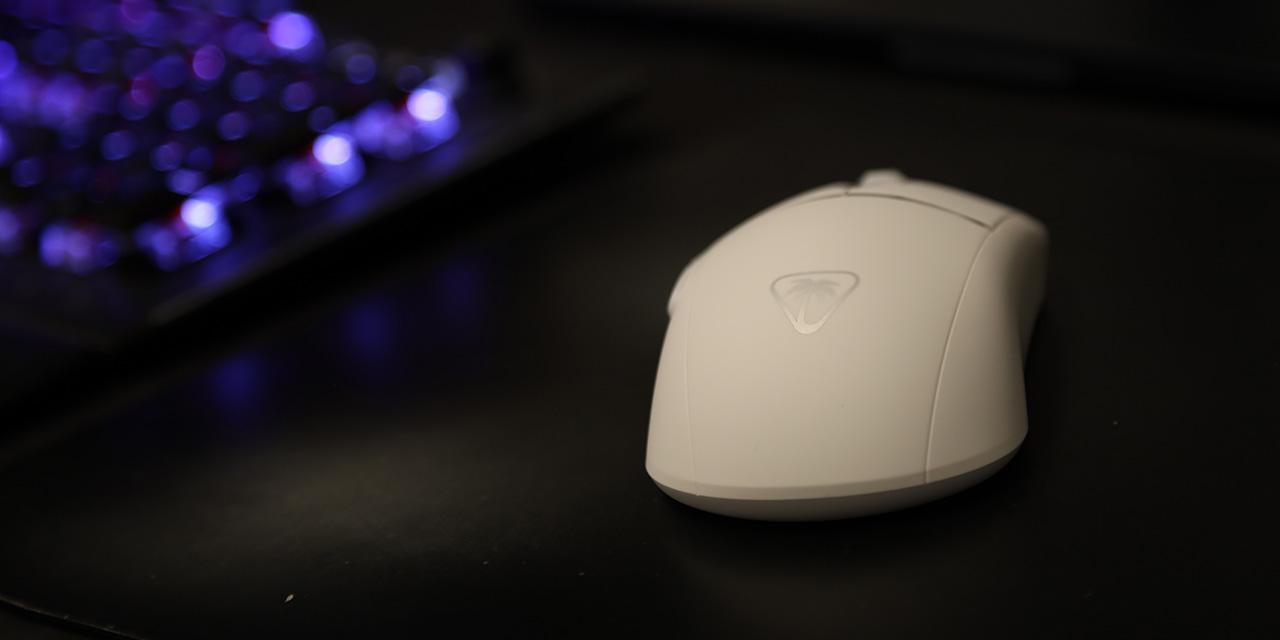Page 2 - A Closer Look - Hardware and Software

The Epomaker Galaxy68 is a standard 65% keyboard when it comes to appearance. It is important to note this keyboard comes in two different variations, with them being Black Green and Black White. In terms of the finish, both versions are powder coated aluminum. Our particular model is the Black White variant. Epomaker opted to use an aluminum case with double-shot PBT keycaps, which has a consistent appearance across the board. The keycap design fits well with the case, which is not a very big surprise, given this is a black and white keyboard. The Galaxy68 features a standard high-bezel design, keeping the keycaps almost level with the frame of the keyboard. Epomaker chose to place minimal branding on this keyboard, with it only being above the arrow keys and on the back. I personally appreciate this as someone who likes minimal branding. The knob is very smooth to use and operates the volume as you may expect. For those unfamiliar with knobs on keyboards, manufacturers commonly use knobs as a volume dial. The Galaxy68 does not come with a wrist rest or adjustable feet, so you will have to adapt to the typing angle, which I personally found to be quite good. I found no issues with typing on this keyboard, but your experience may vary.
The Epomaker Galaxy68 measures in at 346.3mm length, 112.7mm width, and 32mm height according to Epomaker's product page. I believe these measurements do not factor in keycaps and only measure the front of the case. I approximated a height of 40mm at the top of the keycaps. Given this design, this is quite standard for a 65% design. This size also makes sense, given the layout. In terms of mass, this weighs in at 1337g, not including the detachable cord. This might seem heavy for such a small keyboard, but when we consider this is a fully aluminum keyboard with two batteries, everything makes sense. Going into the build quality, the top deck shows no flex when pushing between the small gaps of the keyboard as you may expect from the metal build. When pushing into the keys, there is a very small amount of flex provided from the gasket structure. We will expand more on this on the next page. I did not have to try to bend the keyboard, as there was no possible way for me to bend this case with my bare hands. I was quite satisfied with the build quality, as aluminum is something I have been accustomed to, and am glad to see more keyboards moving in this direction.

The Epomaker Galaxy68 comes in an altered 65% QWERTY ANSI layout. While the majority of the Galaxy68 is the same as a standard 65% keyboard, the homing keys are placed in a 2x2 formation rather than going down along the side. This layout utilizes more space to be able to have a standard right shift and include a knob. The standard 65% layout typically has sixty-seven to sixty-eight keys depending on whether or not we are using a split or divider between the arrow key cluster. A split helps to separate the arrow keys from the rest of the main keys by adjusting the bottom row, making for a less cluttered appearance. The Galaxy68 uses a split in addition to a knob, but still maintains the number of keys of a standard 65% keyboard. The ANSI layout is the standard American layout, which uses a single row Enter key, as seen in some of the earlier images. The keyboard uses a standard bottom row for its key spacing. For those who do not know, 1U standard for a single unit, meaning a 1.25U keycap is 1.25 times wider than a regular one. As such, all of the bottom row keys aside from the space bar and arrow keys are 1.25U. For the average user, the typing experience will feel relatively the same, as the only difference is the smaller right shift and some missing right modifier keys.
The Epomaker Galaxy68 has full N-key rollover, meaning every single key pressed will register even if they are all pressed simultaneously. This means there will be no ghosting issues, where some keys may not be registered. Gamers and fast typists who have fast actions per minute or words per minute will benefit from this, as it will allow more keys to be recognized at the same time. In reality, people usually only need 6-key rollover, so the addition of N-key rollover is nice for extremely fast typists who can reach about 250 words per minute. The inclusion of N-key rollover has become quite standard among keyboards, so this should not come as a surprise the Galaxy68 has it as well.

The secondary functions can be accessed by holding down the Fn key on the bottom right side before pressing the indicated key. We will break this down into general key combinations and lighting shortcuts. There are listed shortcuts in the user manual that we will be following, and I will be confirming that they are correct, as we have had previous experience where the combinations did not work or were simply not possible given the lack of keys.
Starting with some more general functions, the space bar will perform a factory reset. The Q, W, and E keys will switch between three different Bluetooth connections. The R key will connect to the 2.4GHz wireless dongle. The keys A and S will change to Windows and Mac mode, in that respective order. The Left Ctrl key claims to toggle the number row into an F row, but it is rather finicky. There are times where it works and does not work, which is rather annoying. Fortunately, the more standard approach to accessing the F keys still works -- you can just hold down Fn and use a number key. This also works with the Esc key and tilde. The Win key will toggle Windows lock for all those gamers out there. The B key will perform a battery check, where the top row will light up to the 0 to gauge how full the battery is. It is important to note, this only works when using a wireless connection. There is a combination for a key called Lns in the manual, but I have no idea what this actually is as the combination is for Delete, but that is already a key on the keyboard. Next, we have Page Up and Down keys, which will control Home and End in that respective order. In the manual, there is a typo, marking Page Up as “Pgdp”, so there is some proofreading required.
Moving on to lighting, Backspace will toggle on and off lighting. Backslash will toggle between colors, while Enter will toggle the effect. The Up and Down Arrow keys will change the brightness levels, while Left and Right will change the speed. Right Shift will control the logo lighting effect. I and O keys will change the lighting saturation, which is a very interesting option that I have not seen on many other keyboards. The Y key will change the sidelight effects.

As for the keycaps, these are made out of PBT plastic or polybutylene terephthalate, as previously mentioned. I personally prefer PBT, as the material is harder and resists shining better. The lettering is printed out on the top of the keycaps using a double shot process, which is created by injecting plastic into two different molds and pressing them together. Double shot offers the same or better quality of printing compared to dye sublimation, offering great quality in the case of the Epomaker Galaxy68. The coloring and legending are sharp. In terms of warp and shine, PBT is an excellent material, as it is decently resistant to both of these qualities. The font used is quite sharp and consistent with the rest of the board, which is something I find nice. Underneath the keycaps, you can see the typical MX stem. This means you can replace the keycaps with another set. This keyboard uses south-facing lights, which is good, as there will be no interference problems using Cherry profile keycaps, although these are OEM profile. In regard to thickness, they are about 1.3mm thick and pretty even around all sides. The significance of the thickness of a keycap is important for the feel and pitch. To keep things simple, thicker ones have more depth and produce a deeper thock, while thinner ones produce a higher pitch sound.
The Epomaker Galaxy68 features either the Feker Marble White or Epomaker Wisteria Linear switches. Our model contains the Feker Marble White switches. I will say that I have personally used Wiseria switches before and found that the enthusiast community does have a good appreciation for them. Both of these switch options are actually linear, so you may have to find additional switches if you were looking for a tactile keyboard. Going back to the Marble White switches, these switches are linear by nature with a smooth travel from beginning to end. The Marble White switches have a total travel of 3.5m. This is a significant alteration to the standard travel specifications for many mechanical switches opting for a shorter total travel. The total force required to actuate is roughly 30g for operating. These specifications point to these switches being more similar to a speed switch. These switches have a rated lifespan of 50 million keystrokes, which is quite long. The Galaxy68 is also hot-swappable, meaning you can swap these at any time if they start failing.
Even with these specifications, it is quite hard to picture what these switches actually feel like, so I will try my best to explain. For a stock switch, the Feker Marble White switches are more than acceptable. The linear characteristic gives a very smooth travel. If you have used a standard mechanical keyboard before, it will feel slightly different given the shorter travel and lighter spring. With that said, the Marble White switches are good and offer a good value.
Moving on to stabilizers, we have plate-mount Cherry stabilizers. If you are unfamiliar, there are two main designs of stabilizers, which are Cherry and Costar. In both cases, these are used to maintain balance in the longer keys and stabilize them, as the name implies. Cherry ones will have stems matching the bottom of most keycaps, while Costar has a wire hooked into a hoop on the keycaps. The main issue with Costar stabilizers is how they are a rattly mess, and there is practically nothing you can do about it. Cherry stabilizers also rattle, but there are ways to reduce the sound, making it the superior choice.
There is also a large difference between plate mount and PCB mount stabilizers. Generally, there are three types of mounting method, including plate mounting, screw-in, and clip-in. The latter two are PCB-mounted. I personally prefer screw-in stabilizers, as they stay in place the best out of the three options, followed by clip-in. Given the keyboard’s design, plate mount stabilizers make a lot of sense, as they are the easiest to maintain and remove. The ease has a caveat that can also easily fall out. With a small bit of knowledge, anyone should be able to fit them back into place rather easily. With that being said, the included stabilizers are tuned quite well with no apparent rattle.

Taking a peek at the bottom of the keyboard, we have four rubber feet around the base. The feet on the bottom side are average in size and keep the keyboard in place. There should be no noticeable unintentional sliding. There is no cable raceway to manage cables, as the Epomaker Galaxy68 uses a detachable cable design. This is my personal preference, as it makes swapping between keyboards easier. The included 1.8m USB Type-C cable is greatly appreciated. The cable is nice, but wireless connectivity is an option. I will note that in my experience, I was unable to get the 2.4GHz dongle to connect, thus my wireless experience will be based on the Bluetooth connection. It is quite amazing that keyboards have progressed this far in the past few years, as wireless aluminum frame keyboards used to have poor connection due to the metal causing signal degradation. This is not the case for the Galaxy68, as the Bluetooth connection is quite good, and I never experienced any noticeable delays.
As for the battery, we have two 3000mAh batteries, which lasted me over two weeks. It is very important to note I am using Bluetooth, as the 2.4GHz dongle did not connect, meaning my battery life length will be longer due to the lower polling rate. I would estimate an average user to be able to go through a week and a half without charging, assuming they are using the wireless dongle. Do note that your mileage may vary based on how active your keyboard usage is, as Epomaker has implemented an automatic sleep function, which will turn off all lights until any key is actuated. The implementation of automatic sleep is quite good, as I personally would not have noticed the keyboard went to sleep if it was not for the lights.

After doing my thorough inspection, I put the Epomaker Galaxy68 to use. As these Feker Marble White switches are linear in nature, I made sure to account for this in the typing test. My first observation was a nice and medium pitched bottoming out sound with no ping. I should note I am typing on top of a desk mat, which dampens higher pitched sounds. However, the lack of pinging is more due to the dampening within the keyboard. Epomaker has provided a good use of foam to prevent unwanted noise. The smooth linear feel was consistent throughout all the keys, which was nice. As someone who generally enjoys linear switches, I had a great experience as these switches are pre-lubricated, making for a smoother experience. The travel distance and actuation point were both good, and I had no issues whatsoever. A sound test of the Epomaker Galaxy68 can be found above. I found the sound profile to be a clean clack.

I would say the Epomaker Galaxy68 definitely has good lighting effects. The lighting effects are apparent around the keycaps, as these keycaps also do not shine through. Despite this fact, the backlighting effects are still nice to have. I had no issue with configuring it using VIA, and the addition of side glow is nice and aesthetic. I do not think users will have any issues in regard to this, but if you really want the legends to be illuminated, you can swap the keycaps out, as we have standard MX stems and standard bottom row spacing. Forty-four different lighting variations can be toggled through by using the software I will talk about in a moment.

In terms of software, we have VIA, which is probably the best open-source keyboard software you could possibly use. I am personally a long time user of VIA, so I have become quite accustomed to its interface. For those who are not familiar with it, VIA has four primary tabs, being Configure, Key Tester, Design, and Settings.
Starting with Configure, under the Keymap category, you are able to adjust what each key does to any particular setup you want and also adjust any secondary functions you might want to use. If you want to use a weird layout like Colemak, Dvorak, or Carpalx, you can go right ahead and do it. The Macros category will allow you to record macros as you may expect. Save + Load will allow you to save your current keyboard setup. This is useful as I personally have experienced my keyboard resetting to its standard setup, so being able to reload all my settings is quite nice. Lastly, we have Lighting, which controls your keyboard backlighting, under glow, and logo color. You can select a pattern and the color you wish to use.
Moving on, the Key Tester tab is a great place for diagnosis. I often find myself using this tab when building a keyboard, as it is good for testing your PCB as well as double checking if any of your switches have bent pins. Design is a tab you must use for the Galaxy68 as you will need to upload the correct JSON file for the Galaxy68 for VIA to recognize it. The JSON file on the product page is working from my tests. Do not worry about uploading the wrong JSON, as you can simply just upload another one.
Finally, we have the Settings tab, where you will actually need to go to enable the Design tab. Aside from being able to enable the Design tab, you can also toggle Fast Key Mapping and Light Mode. Keycap Theme will just change the theme of VIA to a few popular keycap sets, while Render Mode will allow you to change between 2D and 3D rendering of your keyboard. You can also see Diagnostic Information, which most people probably will not use.
Page Index
1. Introduction, Packaging, Specifications
2. A Closer Look - Hardware and Software
3. A Closer Look - Disassembly and Internals
4. Conclusion





